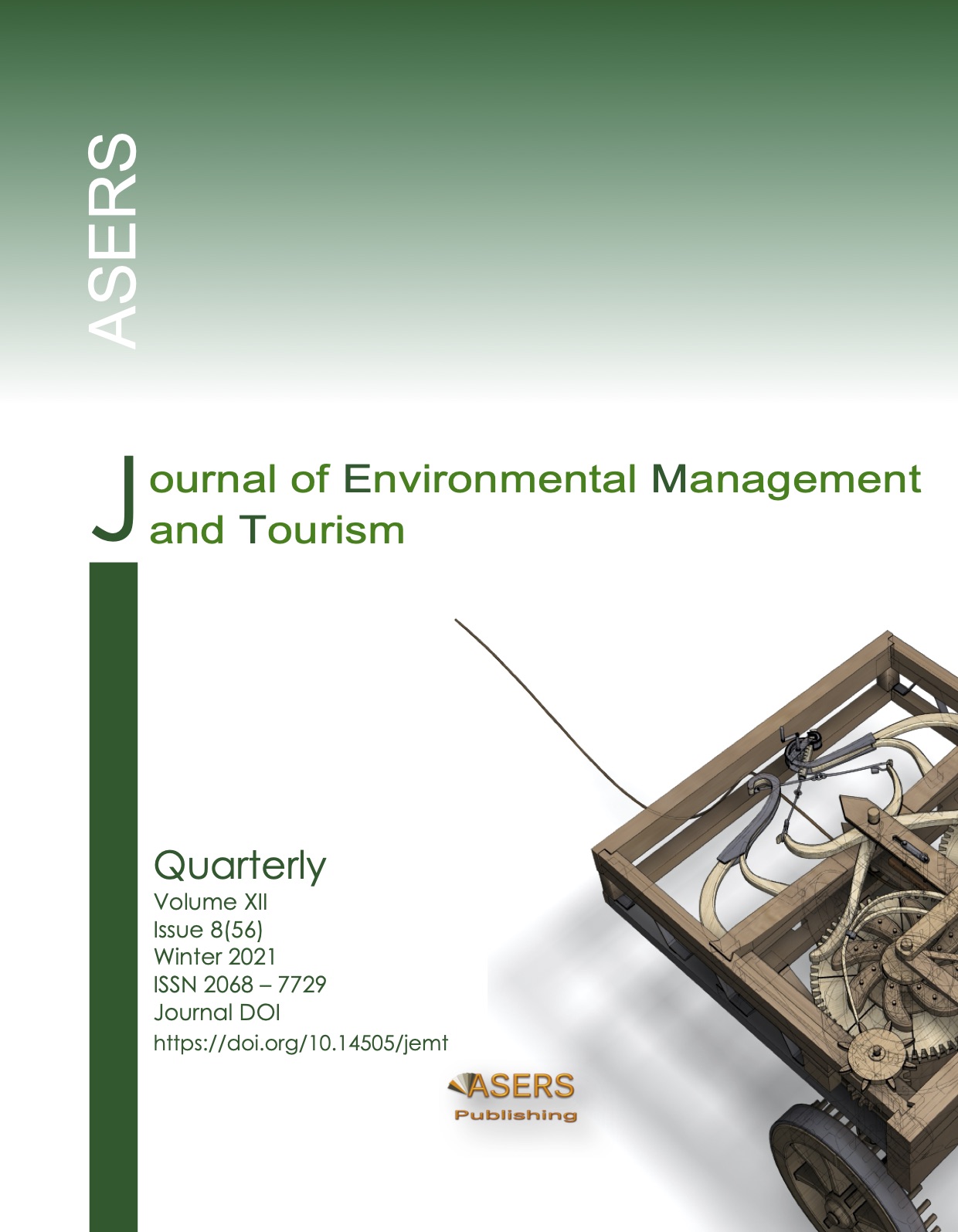Tourism After Lockdown: Will Business Travel Maintain Popularity?
Abstract
Business travel is an exceptional phenomenon of the 21st century and a key segment of the hospitality market. Business travel has filled a niche in the tourism business, easing the problem of seasonality and attracting foreign tourists. This field can produce a lot of economic results for the development of the global economy. Business travel and a country's economy are closely connected as the former plays an important part in improving the country's rating.
The article deals with the consequences of the pandemic for business travel and features of business travel during the pandemic. Based on an expert survey, the authors determine the promise of implementing virtual events in the industry of meetings, incentives, conferences, and exhibitions in the pandemic; the prospects and timeframes for the recovery of various segments of the industry as well as the key imperatives for its recovery after the restrictions are lifted. The authors analyze the operational prospects of the companies working in the business travel segment before and after the restrictions are lifted.
It is concluded that after the restrictions are lifted, business travel will maintain its popularity if the necessary measures are taken to restore the industry and use the latest innovative technologies.
References
[2] Adamenko, A.P., et al. 2020. Economic and legal aspects of consumer right protection in tourism. Journal of Environmental Management and Tourism, 11(8): 1967-1972.
[3] Chebli, A., and Foued, B.S. 2020. The impact of COVID-19 on tourist consumption behavior: a perspective article. Journal of Tourism Management Research, 1(2): 196-207.
[4] Cheer, J.M. 2020. Human flourishing, tourism transformation and COVID-19: a conceptual touchstone. Tourism Geographies, 22(3): 514–524.
[5] Disimulacion, M.A.T. 2020. MICE tourism during COVID-19 and future direction for the new normal. Asia Pacific International Events Management Journal, 2(1): 11-17.
[6] Dwyer, L., and Forsyth, P. 1997. Impacts and benefits of MICE tourism: a framework for analysis. Tourism Economics, 3(1): 21-38.
[7] Gasiev, M. 2004. Foundations of business travel and MICE industry in Russia and abroad: comparison and trends. Moscow, Russia: Marketing, 145 p. (in Russian)
[8] Gulyaev, V.G. 2009. Business travel and MICE industry in Russia and abroad: foundations, concepts and trends. Moscow, Russia: Imprint, 219 p. (in Russian)
[9] Hall, C.M., Scott, D. and Gössling, S. 2020. Pandemics, transformations and tourism: Be careful what you wish for. Tourism Geographies, 22(3): 577-598.
[10] Ho, J.M., Kee, J. and Sia, M. 2020. Embracing an uncertain future: COVID-19 and MICE in Malaysia. Local Development & Society, 1(2): 190-204.
[11] Hoque, A., et al. 2020. The effect of Coronavirus (COVID-19) in the tourism industry in China. Asian Journal of Multidisciplinary Studies, 3(1): 52–58.
[12] Kalabukhova, G.V., et al. 2020. Digitalization as a factor of increasing investment activity in the tourism industry. Journal of Environmental Management and Tourism, 11(4): 883-889.
[13] Kim, K., and Ko, D. 2020. How to build a sustainable MICE environment based on social identity theory. Sustainability, 12: 7166. DOI: https://doi.org/10.3390/su12177166
[14] Nicula V., and Popsa, R.E. 2014. Business travel market developments. Procedia Economics and Finance, 16: 703-712.
[15] Rudskaya, E.N., and Skabarova, A.A. 2015. Business travel: problems, trends, prospects. Molodoi uchenyi, 8: 639–645. (in Russian)
[16] Sánchez-Cañizares, S.M., Cabeza-Ramírez, L.J. Muñoz-Fernández, G. and Fuentes-García, F.J. 2021. Impact of the perceived risk from Covid-19 on intention to travel. Current Issues in Tourism, 24(7): 970-984.
[17] Savin, D.A. and Melnikova, I.G. 2019. Business travel: a textbook. Yaroslavl, Russia: YarGU, 48 p. (in Russian)
[18] Shao, Y., et al. 2021. What is the policy focus for tourism recovery after the outbreak of COVID-19? A co-word analysis. Current Issues in Tourism, 24(7): 899-904.
[19] Shubtsova, L.V., et al. 2020. Supporting the tourism industry in the context of the coronavirus pandemic and economic crisis: Social tourism and public-private partnership. Journal of Environmental Management and Tourism, 11(6): 1427-1434.
[20] Sikarwar, E. 2021. Time-varying foreign currency risk of world tourism industry: effects of COVID-19. Current Issues in Tourism, 24(7): 887-891.
[21] Vedernikov, V.P. 2012. Business travel and development of corporate events: on the issue. Ekonomika. Pravo. Pechat. Vestnik KSEI, 1–2: 219–221. (in Russian)
[22] Zorin, I.V., and Kvartalnov, V.A. 2004. The encyclopedia of tourism: a reference book. Moscow, Russia: Finansy i statistika, 369 p. (in Russian)
[23] Global Business Travel Association (GBTA). January 2021. GBTA BTI™ Outlook annual global report & forecast. Prospects for global business travel 2020-2024. Available at: https://gbta.org/Portals/0/Documents/PR/2020_GBTA_Global_BTI-FINAL.pdf
[24] United Nations. August 2020. Policy brief: COVID-19 and transforming tourism. Available at: https://www.un.org/sites/un2.un.org/files/sg_policy_brief_covid-19_tourism_august_2020.pdf
[25] World Tourism Organization (UNWTO). 2020a. International tourism and covid-19 UNWTO online resource. Available at: https://www.unwto.org/international-tourism-and-covid-19
[26] World Tourism Organization (UNWTO). 2020b. New data shows impact of COVID-19 on tourism as UNWTO calls for responsible restart of the sector. Available at: https://www.unwto.org/news/new-data-shows-impact-of-covid-19-on-tourism
Copyright© 2025 The Author(s). Published by ASERS Publishing 2025. This is an open access article distributed under the terms of CC-BY 4.0 license.
